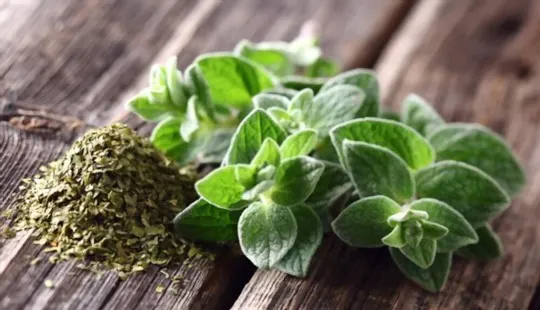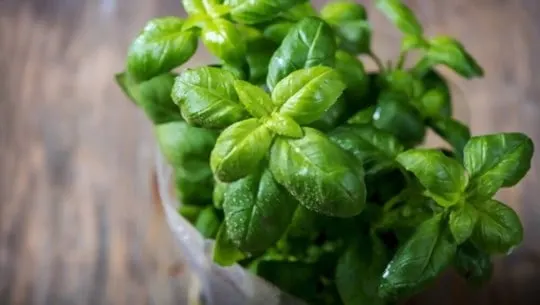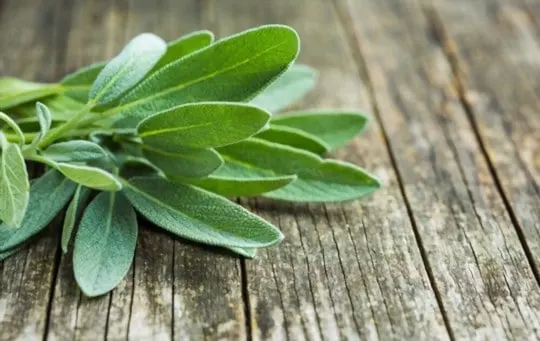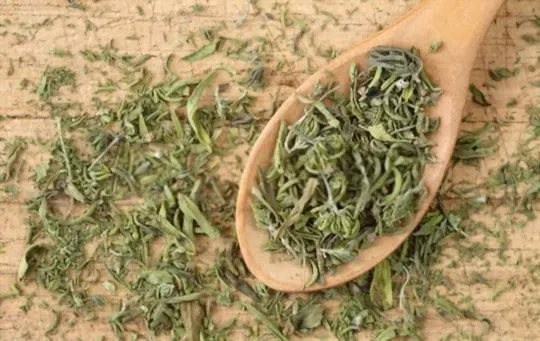Finding the perfect herb substitute can turn your cooking game from good to amazing.
Marjoram’s got a unique flavor, but sometimes, it’s just not sitting in our spice rack.
No sweat. We’ve got you covered with five top-notch swaps. Why? Because no one should have to ditch a recipe over one missing ingredient.
Our picks aren’t random. They’re kitchen tested, ensuring your dishes keep their mouth-watering magic. Each substitute brings its own flair, yet keeps your food tasting as intended.
Curious? You should be. Ready to keep your kitchen creations on point? Let’s dive into this list.
What’s Marjoram?

Herbs can make or break a dish.
They can turn a good meal into a great one with the right combination. And Marjoram is no exception.
This herb is often used in Mediterranean cuisine and has a slightly sweet flavor with hints of pine and citrus.
It’s also got a slightly minty aftertaste, making it the perfect addition to all sorts of dishes.
But what is marjoram exactly? As with most herbs, there are several varieties of marjoram.
The most common type is sweet marjoram (Origanum majorana), used in most culinary applications.
Other types of marjoram include:
- Wild marjoram – This type is typically found in the wild and has a more intense flavor than sweet marjoram. It’s also used to make essential oils.
- Sweet marjoram is the most common type of marjoram and has a sweeter, more delicate flavor.
- Pot marjoram – This variety is similar to sweet marjoram but slightly mintier. It’s often used in potpourris and as an ornamental plant.
Marjoram’s most commonly known use is as a flavoring for meats or stews but can also be used in dressings, soups, omelets, and salads.
For best results, add marjoram to cooking to avoid losing its flavor.
If you’re looking to add a new herb to your repertoire, give marjoram a try.
It’s sure to liven up any dish.
The 5 Best Substitutes for Marjoram
Marjoram is a versatile herb with a delicate flavor, commonly used in Mediterranean and Middle Eastern cuisine.
However, if you don’t have marjoram on hand or want to explore alternative options, there are several substitutes available.
In this guide, we will compare the top 5 substitutes for marjoram, discussing their key characteristics and suggesting proper ratios to help you find suitable alternatives.
| Substitute | Key Characteristics | Proper Ratio |
|---|---|---|
| Oregano | Robust and slightly bitter flavor; commonly used in Italian and Greek dishes | Use an equal amount of oregano as a substitute for marjoram |
| Thyme | Earthy and slightly minty flavor; versatile herb used in various cuisines | Use half the amount of thyme compared to marjoram |
| Basil | Sweet and aromatic flavor; commonly used in Italian and Mediterranean dishes | Use half the amount of basil compared to marjoram |
| Sage | Strong and savory flavor; commonly used in stuffing and hearty dishes | Use half the amount of sage compared to marjoram |
| Summer Savory | Peppery and slightly minty flavor; often used as a substitute for marjoram in traditional cooking | Use an equal amount of summer savory as a substitute for marjoram |
Now, let’s explore each substitute in more detail:
1 – Oregano

Oregano is the next best thing for those who don’t have access to marjoram or can’t find it at the store.
While not an identical match in terms of flavor, oregano has a similar enough taste to be used as a stand-in for marjoram in most recipes.
The biggest difference between oregano and marjoram is in their intensity.
Oregano is a bit more potent, so it’s important to use it sparingly.
In terms of appearance, oregano is a bit sparser than marjoram, with smaller leaves.
Oregano is also a great source of antioxidants, which can help to protect the body against free radicals.
These harmful molecules can damage cells and contribute to diseases like cancer.
Oregano is packed with other beneficial compounds, including vitamins A and C, calcium, and magnesium.
All in all, oregano is a great herb to have on hand for adding flavor to dishes.
It’s also beneficial for your health, so make sure to add it to your diet whenever you can.
- Key Characteristics: Oregano offers a robust and slightly bitter flavor, commonly associated with Italian and Greek cuisine. It can be used as a suitable substitute for marjoram.
- Proper Ratio: Use an equal amount of oregano as a substitute for marjoram. Adjust the quantity based on personal preference and desired taste.
2 – Thyme

Thyme is another popular herb that has a variety of uses.
It’s a great choice for adding flavor to dishes, and it also has some impressive health benefits.
Like oregano, thyme is high in antioxidants.
These nutrients help protect the body from harmful free radicals and may reduce the risk of disease.
Thyme is also a good source of vitamins C and A and calcium and magnesium.
Thyme can be used in various dishes, from soups and stews to pasta sauces and chicken recipes.
It has a strong flavor that can stand up to bold ingredients, but it’s versatile enough to be used in more careful preparations.
- Key Characteristics: Thyme provides an earthy and slightly minty flavor, making it a versatile herb in various cuisines. While not identical to marjoram, it can complement many dishes as a substitute.
- Proper Ratio: Use half the amount of thyme compared to marjoram, as thyme has a stronger flavor. Adjust the other spices and herbs in your recipe as needed.
3 – Basil

For a slightly different flavor, basil can be a great substitute for marjoram.
This herb has a sweet and peppery taste with many different dishes.
Like marjoram, basil is a good source of antioxidants.
It also contains vitamins A and C, as well as magnesium.
Basil is most commonly used in Italian cuisine but can be added to any dish for a bit of flavor.
The taste of basil is a little more potent than marjoram, so use less if you substitute it in a recipe.
The texture of basil is also slightly different than marjoram.
Basil is softer and has a more delicate flavor.
This herb can be used fresh or dried and is easily added to dishes.
When substituting basil for marjoram, keep in mind that the flavors are slightly different.
Basil is a good substitute if you look for something with a little more kick.
Use less of it if you want to stay closer to the flavor of marjoram.
Fresh or dried basil can be used in many dishes.
- Key Characteristics: Basil offers a sweet and aromatic flavor that is commonly used in Italian and Mediterranean cuisine. While different from marjoram, it can provide a fresh substitute.
- Proper Ratio: Use half the amount of basil compared to marjoram. Adjust the other flavors in your dish accordingly.
4 – Sage

If you are looking for an herb with a slightly different flavor, sage is a good choice.
Sage has a woodsy taste that goes well with poultry and other meats.
Sage also has a slightly gritty texture, so it is not the best choice for dishes that are meant to be smooth.
Fresh sage leaves are a beautiful green color, and they can be used to garnish dishes or added to salads.
Sage is also available in dried form, with a more intense flavor than fresh sage.
If you use dried sage, you will only need to use a small amount since the flavor is so concentrated.
You can find sage in the spice aisle of most grocery stores.
- Key Characteristics: Sage has a strong and savory flavor, often associated with stuffing and hearty dishes. Though distinct from marjoram, it can add depth as a substitute.
- Proper Ratio: Use half the amount of sage compared to marjoram, as sage has a more intense flavor. Adjust the other seasonings in your recipe to balance the flavors.
5 – Summer Savory

The summer savory herb is a member of the mint family.
It is an annual plant that grows wild in many parts of Europe and Asia but can also be cultivated in gardens.
The leaves and flowers are used to flavor food.
Summer savory has a peppery taste similar to thyme and is often used to season meat, fish, eggs, and vegetables.
It is also used to make herbal teas and potpourris.
Summer savory is a versatile herb that can be used in many dishes.
It pairs well with other herbs such as thyme, rosemary, and oregano.
When substituting summer savory for marjoram, use half as much of the herb since it is more potent.
Remember that summer savory has a stronger flavor than marjoram and can overwhelm a dish if not used sparingly.
This herb is easy to grow and can be found at most garden stores.
It is a good substitute for marjoram when it is not available.
- Key Characteristics: Summer savory has a peppery and slightly minty flavor, making it a suitable replacement for marjoram in traditional cooking. It pairs well with meats and vegetables.
- Proper Ratio: Use an equal amount of summer savory as a substitute for marjoram. Adjust the quantity based on personal preference and desired taste.
Conclusion
Marjoram is an important herb in the culinary world, with a unique flavor that is difficult to replicate.
However, several substitutes are available that can come close to matching its taste.
When looking for a substitute for marjoram, it’s important to consider the flavor and texture of the herb and any other relevant factors.
With these things in mind, any one of the following substitutes should make for a good Marjoram replacement in your dish.
While each of these herbs has a different flavor profile, they all share similarities with marjoram, making them good substitutes.

The 5 Best Substitutes for Marjoram
Ingredients
- Oregano
- Thyme
- Basil
- Sage
- Summer Savory
Instructions
- Pick your favorite substitute from the list above.
- Follow cooking directions for your selected substitute with the proper ratio of ingredients.

Andrew Gray is a seasoned food writer and blogger with a wealth of experience in the restaurant and catering industries. With a passion for all things delicious, Andrew has honed his culinary expertise through his work as a personal chef and caterer.
His love for food led him to venture into food writing, where he has contributed to various online publications, sharing his knowledge and insights on the culinary world. As the proud owner of AmericasRestaurant.com, Andrew covers a wide range of topics, including recipes, restaurant reviews, product recommendations, and culinary tips.
Through his website, he aims to inspire and educate fellow food enthusiasts, offering a comprehensive resource for all things food-related.

Leave a comment